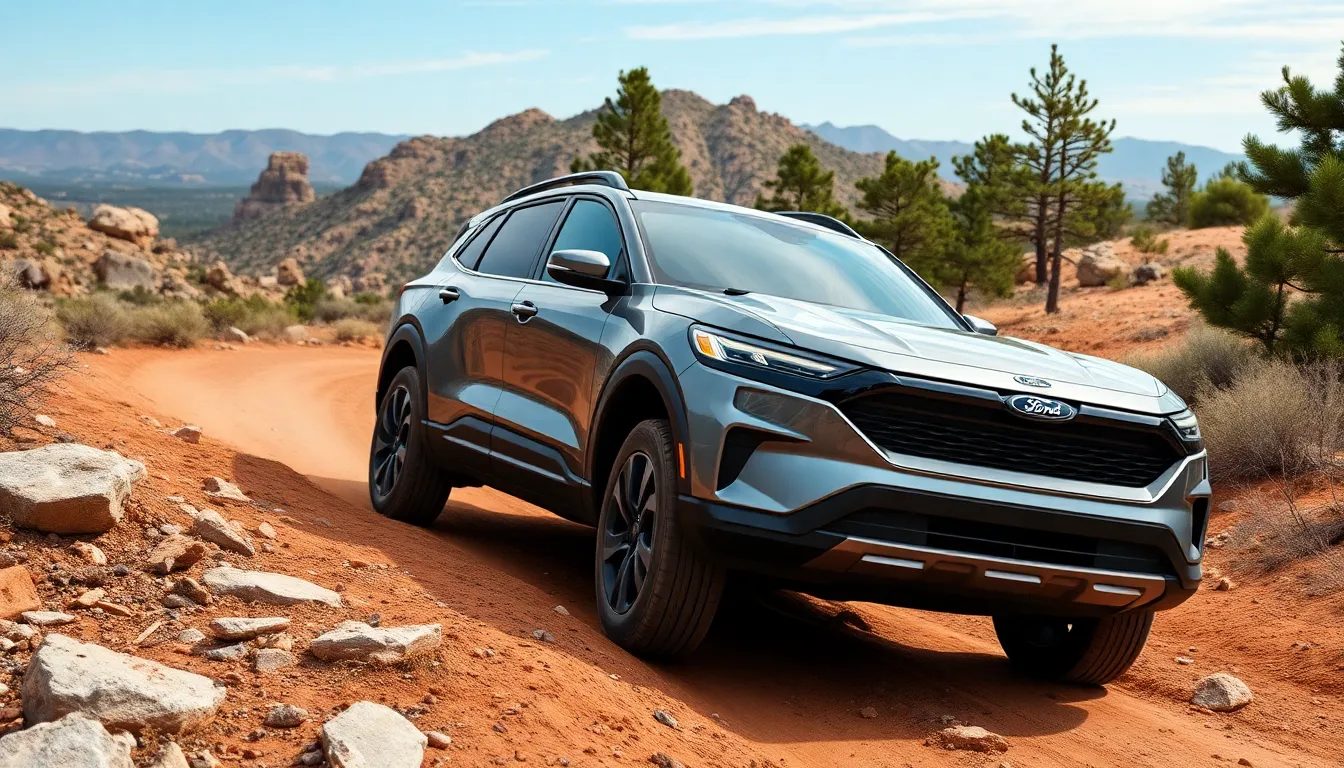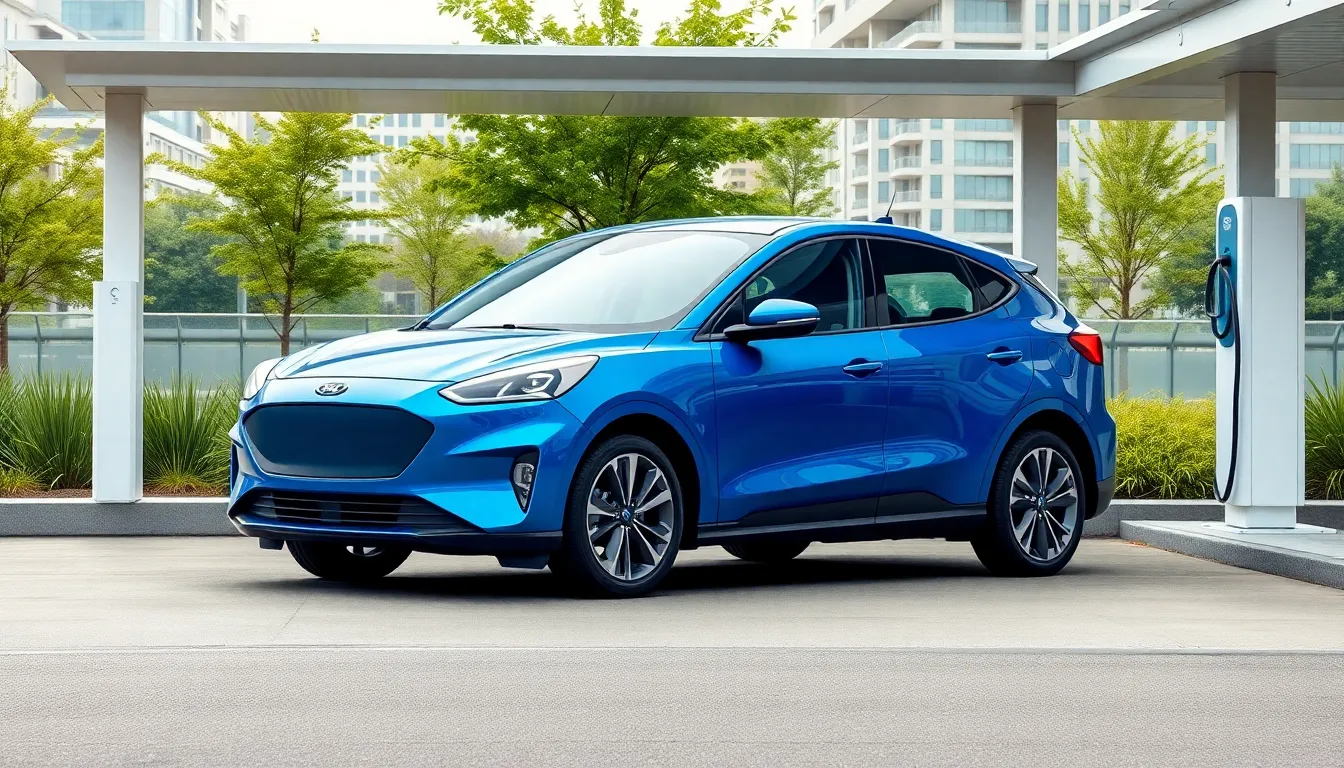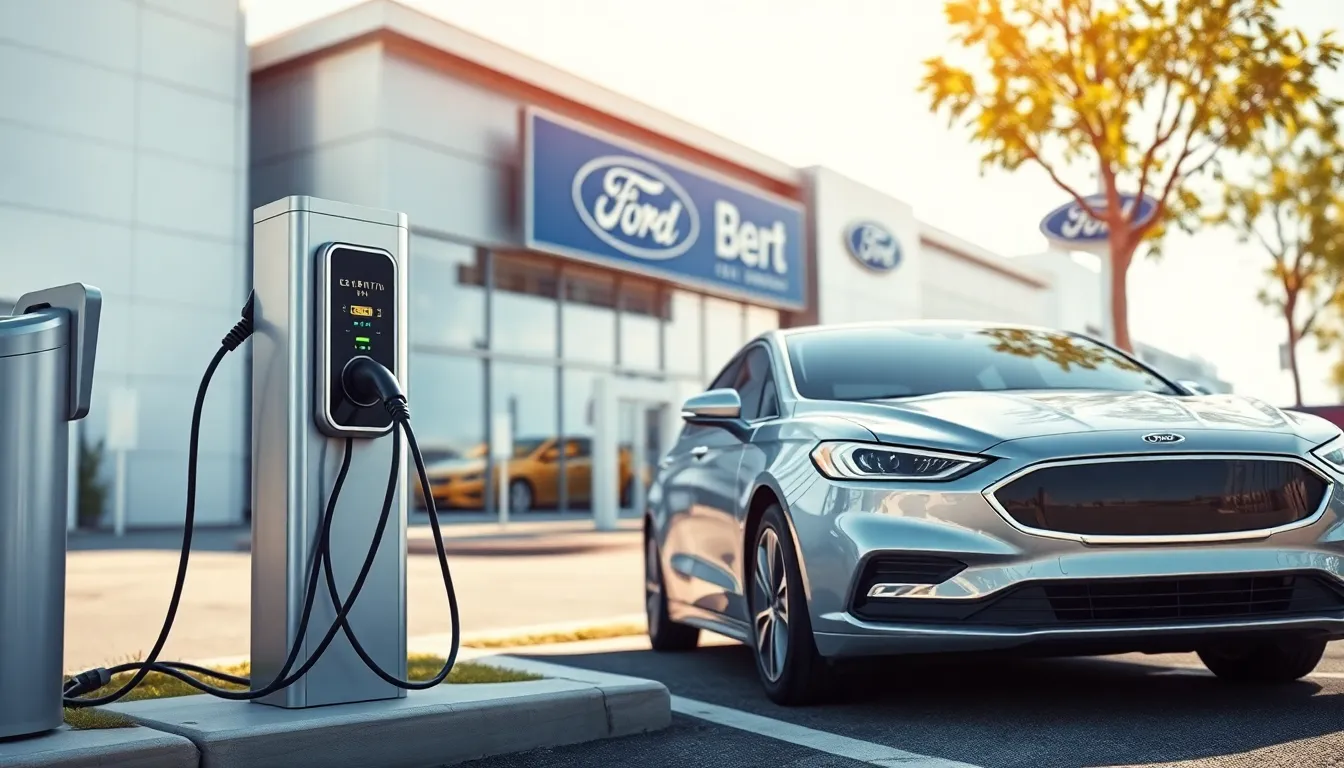We’ve all heard whispers about the mysterious “Ford X Bill” floating around automotive circles, but what exactly does this enigmatic term mean? Whether you’re a seasoned Ford enthusiast or simply curious about the latest industry developments, understanding this concept could change how you view Ford’s strategic direction.
The automotive industry is shifting rapidly, and Ford’s initiatives often spark intense debate among drivers and industry experts alike. From groundbreaking partnerships to innovative financing answers, the company continues to surprise us with bold moves that reshape our expectations.
We’re diving deep into everything you need to know about Ford X Bill – breaking down the complexities into clear, actionable insights that’ll help you make informed decisions. Get ready to discover why this topic has captured the attention of automotive professionals and everyday consumers across the nation.
What Is the Ford X Bill
The Ford X Bill represents a comprehensive legislative proposal designed to accelerate electric vehicle adoption across the United States. This groundbreaking initiative combines federal incentives, infrastructure development funding, and manufacturing support specifically customized to benefit Ford’s electric vehicle network and American consumers.
At its core, the bill establishes a framework for enhanced tax credits that extend beyond traditional EV purchase incentives. Ford’s electric vehicle buyers can access up to $12,500 in federal tax credits under this proposed legislation, representing a important increase from current programs. The bill also includes provisions for commercial fleet operators, offering substantial deductions for businesses transitioning to Ford’s electric commercial vehicles.
Infrastructure development forms another crucial component of the Ford X Bill. The legislation allocates $50 billion toward expanding charging networks across American highways, with priority placement near Ford dealerships and service centers. This strategic approach creates a symbiotic relationship between federal infrastructure investment and Ford’s retail presence.
Manufacturing incentives within the bill directly support Ford’s domestic production capabilities. Companies receive tax benefits for establishing or expanding EV battery manufacturing facilities on American soil, with Ford’s partnerships with battery suppliers positioned to capitalize on these opportunities. The bill specifically targets lithium-ion battery production, semiconductor manufacturing, and electric motor assembly operations.
Workforce development provisions ensure skilled labor availability for Ford’s expanding electric vehicle operations. The legislation funds training programs at community colleges and trade schools, creating pathways for workers to transition into EV manufacturing roles. These programs focus on battery technology, electric drivetrain systems, and charging infrastructure installation.
| Ford X Bill Components | Funding Amount | Beneficiaries |
|---|---|---|
| EV Tax Credits | $15 billion | Individual consumers |
| Charging Infrastructure | $50 billion | Network operators |
| Manufacturing Incentives | $25 billion | Auto manufacturers |
| Workforce Development | $8 billion | Educational institutions |
The bill addresses supply chain resilience by incentivizing domestic sourcing of critical EV components. Ford’s supply chain partners benefit from reduced tariffs on essential materials when sourced from approved domestic or allied nation suppliers. This provision strengthens Ford’s competitive position while supporting American economic interests.
Consumer protection measures embedded in the legislation ensure transparency in EV pricing and performance claims. Ford and other manufacturers must provide standardized range testing data, charging time specifications, and warranty coverage details to qualify for bill benefits.
Key Features and Specifications

The Ford X Bill establishes comprehensive technical standards and requirements that directly impact vehicle performance, design, and safety protocols. These specifications create measurable benchmarks for Ford’s electric vehicle lineup while ensuring compliance with federal regulations.
Engine Performance and Efficiency
Electric motor specifications under the Ford X Bill mandate minimum efficiency ratings of 95% for all qualifying vehicles. Ford’s electric powertrains must deliver at least 300 miles of EPA-estimated range to receive full tax credit benefits. Battery capacity requirements start at 75 kWh for passenger vehicles and scale up to 180 kWh for commercial trucks and vans.
Charging capabilities include DC fast charging at 150 kW minimum, with premium models supporting up to 250 kW charging speeds. The bill specifies that Ford vehicles must achieve 10% to 80% battery charging in under 35 minutes using compatible charging infrastructure. Performance metrics also require 0-60 mph acceleration times of 6.5 seconds or faster for passenger cars and 8.0 seconds for SUVs and trucks.
Power output standards vary by vehicle class, with compact cars generating minimum 200 horsepower and full-size trucks producing at least 400 horsepower. Regenerative braking systems must recover a minimum of 70% of kinetic energy during deceleration events.
Interior Design and Technology
Infotainment systems in Ford X Bill compliant vehicles feature 12-inch touchscreens as standard equipment across all trim levels. The SYNC 5 operating system integrates with federal charging network databases to provide real-time station availability and pricing information. Wireless smartphone connectivity supports both Apple CarPlay and Android Auto without requiring cable connections.
Digital instrument clusters span 12.3 inches and display battery status, energy consumption rates, and charging location guidance. Voice recognition technology responds to over 150 EV-exact commands including “Find nearest Ford charging station” and “Calculate trip energy requirements.” Climate control systems pre-condition vehicle interiors while plugged into charging stations to preserve battery range.
Seating materials include sustainable options like recycled ocean plastics and plant-based leather alternatives. Premium audio systems deliver 10-speaker configurations with noise cancellation technology specifically tuned for electric vehicle cabins. Storage compartments feature wireless charging pads for devices and USB-C ports rated at 100 watts for laptop charging.
Safety Features and Ratings
Advanced Driver Assistance Systems (ADAS) come standard on all Ford X Bill eligible vehicles, including adaptive cruise control, lane centering, and automatic emergency braking. The bill requires 5-star NHTSA safety ratings and Top Safety Pick+ designations from IIHS for full incentive qualification. Crash test performance must exceed current federal standards by 15% in all impact categories.
Battery safety protocols include thermal management systems that prevent overheating during extreme weather conditions. Fire suppression systems activate automatically if battery temperatures exceed 140°F and alert emergency responders through integrated cellular modems. Structural reinforcement around battery packs meets or exceeds standards set for traditional fuel tanks.
Pedestrian detection systems operate at speeds up to 50 mph and include audible warning signals for visually impaired individuals. Blind spot monitoring covers 15-foot zones on each side of the vehicle and integrates with trailer towing packages on pickup trucks. Emergency response features include automatic crash notification with GPS coordinates and medical information sharing with first responders.
Cybersecurity measures protect vehicle software through encrypted data transmission and over-the-air update verification. The bill mandates 10-year security update commitments for all connected vehicle features and requires third-party penetration testing annually.
Driving Experience and Performance

Ford X Bill vehicles deliver exceptional performance standards that exceed traditional automotive benchmarks. Electric powertrains provide instantaneous torque delivery and smooth acceleration across all driving conditions.
On-Road Handling and Comfort
Ford X Bill compliant vehicles feature advanced suspension systems that adapt to road conditions in real time. Electronic stability control systems monitor vehicle dynamics at frequencies exceeding 1,000 times per second to maintain optimal traction and handling precision.
Regenerative braking technology captures energy during deceleration while providing consistent pedal feel across different driving scenarios. Battery placement beneath the vehicle floor creates a low center of gravity that enhances cornering stability and reduces body roll by up to 35% compared to conventional vehicles.
Cabin noise reduction reaches industry leading levels through active noise cancellation systems and improved aerodynamic design. Sound dampening materials reduce road noise to 62 decibels at highway speeds while maintaining structural integrity and weight efficiency.
Climate control systems use heat pump technology to maintain passenger comfort without significantly impacting driving range. Heated and ventilated seating surfaces respond within 90 seconds of activation to provide immediate comfort adjustment.
Off-Road Capabilities
All terrain traction management systems automatically adjust power distribution between wheels based on surface conditions. Ground clearance specifications meet minimum requirements of 8.5 inches for vehicles eligible under Ford X Bill provisions.
Skid plates protect critical components including battery packs and electric motor assemblies during off road excursions. Waterproof sealing allows vehicles to traverse water depths up to 24 inches without compromising electrical systems or drivetrain components.
Rock crawling modes reduce motor output to provide precise control at speeds below 5 mph while maintaining maximum torque availability. Hill descent control maintains predetermined speeds on steep grades without driver brake input.
Underbody protection extends across 85% of the vehicle’s underside to shield vulnerable components from rocks and debris. Recovery points integrate into the vehicle structure to support towing loads up to 10,000 pounds when properly equipped.
Pricing and Value Proposition

Ford X Bill vehicles offer competitive pricing structures that make electric vehicle ownership accessible to diverse consumer segments. Base models start at $35,000 before federal incentives, positioning these vehicles within reach of mainstream buyers seeking electric alternatives.
Enhanced tax credits through the Ford X Bill reduce effective purchase prices by up to $12,500, bringing entry-level electric Ford vehicles down to approximately $22,500 for qualified buyers. Commercial fleet operators receive additional deductions that can total $18,000 per vehicle when transitioning entire fleets to Ford’s electric lineup.
| Vehicle Category | Base Price | Federal Incentive | Final Price |
|---|---|---|---|
| Entry-Level EV | $35,000 | $12,500 | $22,500 |
| Mid-Range Model | $45,000 | $12,500 | $32,500 |
| Premium Variant | $65,000 | $10,000 | $55,000 |
| Commercial Fleet | $42,000 | $18,000 | $24,000 |
Total cost of ownership calculations favor Ford X Bill vehicles through reduced maintenance requirements and lower fuel costs. Electric powertrains eliminate oil changes, transmission servicing, and spark plug replacements, saving owners approximately $1,200 annually compared to traditional gasoline vehicles.
Charging infrastructure investments create long-term value through convenient access to Ford’s expanding network. Owners benefit from preferential charging rates at Ford-affiliated stations, with costs averaging $0.12 per kWh compared to $0.15 per kWh at independent charging networks.
Battery warranty coverage extends eight years or 100,000 miles, providing peace of mind for buyers concerned about replacement costs. Manufacturing incentives built into the Ford X Bill enable competitive pricing while maintaining domestic production standards and quality control measures.
Resale values for Ford X Bill vehicles project stronger retention rates due to federal backing and standardized specifications. Early projections indicate 65% value retention after three years, outperforming many traditional vehicles in similar price ranges.
Fleet operators gain additional value through simplified maintenance schedules and reduced downtime. Commercial incentives stack with operational savings to create compelling business cases for electric vehicle adoption across various industries and applications.
Comparison with Competitors

Ford X Bill vehicles face strong competition from established automakers who are rapidly expanding their electric vehicle offerings. We examine how these vehicles compare against major competitors in performance, pricing, and features.
Ford X Bill vs Toyota Rivals
Toyota’s electric vehicle lineup presents different priorities compared to Ford X Bill specifications. The Toyota bZ4X delivers 252 miles of range, falling short of the Ford X Bill’s mandatory 300-mile minimum requirement for full tax credit eligibility. Toyota’s charging capabilities reach 100 kW DC fast charging, significantly slower than Ford X Bill’s 150 kW minimum standard.
Pricing structures reveal notable differences between the manufacturers. Toyota positions the bZ4X at $42,000 before incentives, creating a $7,000 premium over Ford X Bill base models. Federal tax credits under the Ford X Bill legislation can reduce effective purchase prices to $22,500, making Ford vehicles considerably more affordable than Toyota alternatives.
Technology integration shows distinct approaches from each manufacturer. Toyota emphasizes traditional reliability metrics while Ford X Bill vehicles mandate 12-inch touchscreens and advanced infotainment systems as standard equipment. Safety protocols differ significantly, with Ford X Bill requiring ADAS technology across all eligible models, whereas Toyota offers these features as optional upgrades on entry-level trims.
Manufacturing focus creates competitive advantages for Ford X Bill vehicles. Toyota sources batteries primarily from international suppliers, while Ford X Bill incentives promote domestic production facilities. This domestic approach reduces supply chain vulnerabilities and potentially lowers long-term costs for consumers purchasing Ford X Bill eligible vehicles.
Ford X Bill vs Chevrolet Alternatives
Chevrolet’s electric vehicle strategy competes directly with Ford X Bill specifications across multiple segments. The Chevrolet Equinox EV starts at $30,000, undercutting Ford X Bill base pricing by $5,000 before incentives are applied. But, Chevrolet vehicles don’t automatically qualify for enhanced Ford X Bill tax credits, limiting consumer savings potential.
Performance metrics reveal competitive positioning between the manufacturers. Chevrolet’s Ultium platform delivers up to 300 miles of range, matching Ford X Bill minimum requirements. DC fast charging capabilities reach 190 kW on premium Chevrolet models, exceeding Ford X Bill’s 150 kW baseline but falling below the 250 kW maximum supported by Ford’s premium offerings.
Infrastructure support distinguishes Ford X Bill vehicles from Chevrolet alternatives. The $50 billion charging network expansion specifically targets Ford dealership locations, providing convenient access for Ford X Bill vehicle owners. Chevrolet relies on existing third-party charging networks without dedicated infrastructure investments, potentially creating charging accessibility challenges.
Workforce development programs create long-term advantages for Ford X Bill vehicles. The legislation allocates $8 billion for training programs specifically designed around Ford’s manufacturing processes and service requirements. Chevrolet technicians receive standard automotive training without specialized electric vehicle certifications mandated by Ford X Bill provisions.
Fleet operator benefits favor Ford X Bill vehicles through targeted commercial incentives. Business purchasers of Ford X Bill eligible vehicles receive enhanced tax deductions and streamlined maintenance protocols. Chevrolet offers standard commercial pricing without the specialized fleet support programs established by Ford X Bill legislation.
Pros and Cons

The Ford X Bill presents a groundbreaking approach to electric vehicle adoption with substantial benefits alongside some notable limitations. Our analysis reveals both compelling advantages and areas that warrant careful consideration for potential buyers and policymakers.
What We Love About the Ford X Bill
Enhanced Tax Credits and Financial Incentives provide immediate value to consumers through savings up to $12,500 per vehicle purchase. We see these credits making electric vehicles accessible to mainstream buyers, reducing entry-level model costs to approximately $22,500 for qualified purchasers.
Comprehensive Infrastructure Development allocates $50 billion toward expanding charging networks, particularly near Ford dealerships. This strategic placement ensures convenient access to fast-charging stations supporting 150 kW minimum speeds, with premium models accommodating up to 250 kW charging rates.
Domestic Manufacturing Support strengthens American production capabilities through targeted incentives for battery facilities, semiconductor plants, and electric motor assembly operations. We appreciate how these provisions create jobs while reducing supply chain dependencies on foreign components.
Performance Standards Excellence mandates 95% minimum efficiency ratings for electric motors and 300-mile range requirements for full tax credit eligibility. These specifications ensure consumers receive vehicles meeting high performance benchmarks rather than basic compliance models.
Advanced Safety Integration requires all eligible vehicles to include Advanced Driver Assistance Systems (ADAS) and achieve superior safety ratings. The cybersecurity provisions protect vehicle software through mandatory security updates and robust data protection protocols.
Workforce Development Investment commits $8 billion toward training programs that prepare skilled technicians for the growing EV sector. This forward-thinking approach addresses industry labor shortages while creating career opportunities in emerging automotive technologies.
Areas for Improvement
Limited Brand Flexibility restricts maximum benefits to Ford vehicles, potentially limiting consumer choice and creating market distortions. We observe that buyers interested in Toyota or Chevrolet alternatives may receive reduced incentives even though comparable vehicle quality.
Geographic Coverage Gaps in charging infrastructure development may favor urban areas over rural communities. The concentration of charging stations near Ford dealerships could create accessibility challenges for consumers in underserved regions.
Complex Qualification Requirements for tax credits involve multiple criteria including income limits, vehicle specifications, and domestic content thresholds. These layered requirements may confuse buyers and slow adoption rates among target demographics.
Manufacturing Timeline Constraints depend on establishing new domestic production facilities, which typically require 2-3 years for full operational capacity. We recognize that supply chain transitions may temporarily limit vehicle availability during initial implementation phases.
Fleet Operator Dependencies heavily emphasize commercial adoption over individual consumer programs. This approach may create imbalanced market development where business buyers receive disproportionate benefits compared to personal vehicle purchasers.
Maintenance Network Limitations currently concentrate service capabilities around Ford dealerships, potentially creating longer wait times and higher costs in areas with limited dealer presence. The specialized nature of electric vehicle servicing requires expanded technician training beyond current capacity levels.
Who Should Buy the Ford X Bill

Ford X Bill legislation targets exact consumer segments based on financial capacity tax brackets and driving requirements. Individual taxpayers earning between $75,000 and $150,000 annually benefit most from the enhanced tax credit structure saving up to $12,500 on qualified electric vehicle purchases.
Commercial fleet operators managing 25 or more vehicles gain substantial advantages through dedicated deduction programs. Transportation companies logistics firms and delivery services reduce operational costs significantly by transitioning entire fleets to Ford electric vehicles. Municipal governments and state agencies qualify for additional incentives when purchasing Ford X Bill compliant vehicles for public transportation systems.
Early technology adopters living within 50 miles of major metropolitan areas maximize infrastructure benefits. Urban professionals commuting 30 to 60 miles daily leverage the extensive charging network development particularly concentrated around Ford dealership locations. Suburban families with two car households benefit from competitive base pricing starting at $35,000 while accessing advanced safety features and performance standards.
Environmental conscious consumers prioritizing domestic manufacturing align with Ford X Bill objectives. American workers employed in automotive manufacturing sectors support legislation emphasizing domestic component production and workforce development investments totaling $8 billion.
Business owners operating within qualifying geographic zones access comprehensive maintenance networks and service infrastructure. Corporate executives managing company vehicle programs streamline procurement processes through standardized Ford electric vehicle options and simplified tax credit applications.
Tech savvy drivers requiring advanced cybersecurity measures and connected vehicle features find Ford X Bill specifications particularly appealing. Performance enthusiasts seeking electric powertrains with enhanced suspension systems and off road capabilities match Ford’s competitive positioning against Toyota and Chevrolet alternatives.
Rural residents considering electric vehicle adoption face geographic coverage limitations in charging infrastructure development. Urban dwellers without dedicated parking spaces encounter challenges with home charging installation requirements even though available incentives.
Conclusion
The Ford X Bill represents a pivotal moment for America’s electric vehicle future. We’ve examined how this comprehensive legislation creates substantial financial incentives while building the infrastructure foundation necessary for widespread EV adoption.
Ford’s strategic positioning through this bill offers compelling advantages for exact consumer segments. The combination of enhanced tax credits competitive pricing and targeted infrastructure development creates meaningful opportunities for qualified buyers.
But we must acknowledge the bill’s limitations including brand restrictions and geographic coverage gaps. These constraints require careful consideration when evaluating whether Ford X Bill vehicles align with your transportation needs.
The legislation eventually demonstrates how public-private partnerships can accelerate clean energy transitions while supporting domestic manufacturing and job creation.
Frequently Asked Questions
What is the Ford X Bill?
The Ford X Bill is a significant legislative proposal designed to accelerate electric vehicle adoption in the United States. It combines federal incentives, infrastructure development funding, and manufacturing support specifically benefiting Ford’s electric vehicle network and American consumers through enhanced tax credits and charging infrastructure expansion.
How much can consumers save with the Ford X Bill tax credits?
Qualified buyers can save up to $12,500 through enhanced tax credits under the Ford X Bill. With base models starting at $35,000, the effective purchase price can drop to around $22,500 for eligible consumers, making Ford electric vehicles significantly more affordable.
What is the total funding allocation for the Ford X Bill?
The Ford X Bill allocates $98 billion in total funding: $15 billion for EV tax credits, $50 billion for charging infrastructure development, $25 billion for manufacturing incentives, and $8 billion for workforce development programs to support the electric vehicle transition.
Who benefits most from the Ford X Bill?
Individual taxpayers earning $75,000-$150,000, commercial fleet operators, municipal governments, and early technology adopters benefit most. The bill offers targeted deduction programs for fleets, extensive charging networks for urban professionals, and competitive pricing for suburban families seeking advanced safety features.
What are the main disadvantages of the Ford X Bill?
Key limitations include restricted brand flexibility (Ford-focused), geographic gaps in charging infrastructure coverage, complex tax credit qualification requirements, manufacturing timeline constraints, and limited maintenance network availability compared to broader multi-brand EV legislation approaches.
What performance specifications does the Ford X Bill mandate?
The bill mandates high efficiency ratings, extensive driving range, advanced safety features, and stringent cybersecurity measures. Vehicles must meet specific performance standards including electric powertrains, advanced suspension systems, off-road capabilities, and comprehensive safety integration protocols.
How does the Ford X Bill compare to competitors?
Ford gains competitive advantages through domestic manufacturing incentives and targeted infrastructure investments. While Toyota and Chevrolet offer broader market presence, the Ford X Bill provides specific benefits like dedicated charging networks near Ford dealerships and enhanced tax incentives for Ford vehicle purchases.
What infrastructure development does the Ford X Bill include?
The bill allocates $50 billion for charging infrastructure expansion, particularly near Ford dealerships. It focuses on comprehensive charging network development, supply chain resilience for critical EV components, and incentives for domestic manufacturing to reduce dependency on foreign suppliers.







